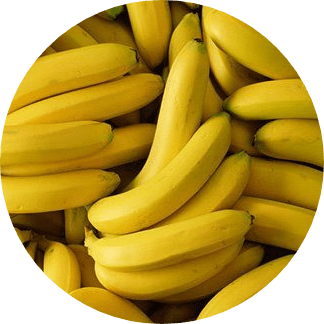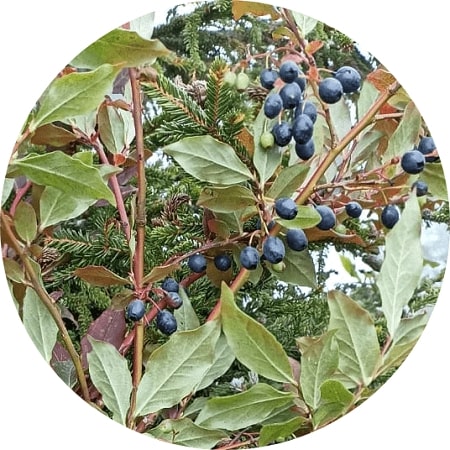What fruits are in season in Panama?
We have prepared content about seasonal fruits grown in Panama. In this article, we will give information about various fruits that can grow in Panama in summer and winter. What is the green fruit in Panama? Panama is known for its diverse array of tropical fruits, and several green fruits can be found in the country. One of the most popular green fruits in Panama is the “guanábana” or “soursop” in English. Guanábana (Annona muricata) is a green, spiky fruit with soft, white, fibrous flesh. It is known for its unique flavor, which is a combination of strawberry, pineapple, and citrus notes.
Guanábana is used in various culinary preparations in Panama, including juices, smoothies, ice creams, and desserts. Panama’s tropical climate and diverse geography make it suitable for the cultivation of a wide variety of fruits. Some of the fruit varieties that grow in Panama include:
- Bananas: Panama is one of the top banana-producing countries in Central America, with both dessert and cooking banana varieties being grown.
- Pineapples: Pineapples thrive in Panama’s tropical climate, and they are a significant fruit crop in the country.
- Papayas: Papayas are a popular tropical fruit in Panama and are widely cultivated.
- Mangoes: Mango trees are abundant in Panama, and you can find various mango varieties, each with its unique flavor and characteristics.
- Citrus fruits: Oranges, lemons, limes, and grapefruits are commonly grown in Panama.
- Guavas: Guavas are a tropical fruit that is readily available in Panama and used for various culinary purposes.
- Avocados: Avocado trees are common in Panama, and the country produces several avocado varieties.
- Coconuts: Coconut palms are found along Panama’s coasts, and coconuts are used for their water, milk, and meat.
- Passion fruit: Passion fruit, known locally as “maracuyá,” is cultivated for its aromatic and tangy juice.
- Guanabana (soursop): This tropical fruit is prized for its sweet and sour flavor and is used in beverages and desserts.
- Starfruit: Starfruit trees produce star-shaped fruits that are both decorative and edible.
- Lychees: Lychee trees grow in some parts of Panama, producing the sweet and juicy lychee fruit.
- Rambutan: Rambutan is another exotic fruit found in Panama, known for its hairy skin and sweet flesh.
- Pitahaya (dragon fruit): Pitahaya is gaining popularity in Panama, and it is known for its vibrant pink or yellow skin and sweet flesh.
- Zapote: Zapote is a tropical fruit with a sweet and creamy pulp, often used in desserts and beverages.
- Breadfruit: Breadfruit trees produce starchy, bread-like fruits that can be roasted, fried, or boiled.
- Nance: Nance is a small, yellow fruit with a tangy flavor, often used in preserves and beverages.

These are just some of the fruit varieties that grow in Panama, thanks to its favorable climate and diverse ecosystems. The availability of these fruits may vary by region within the country, with some fruits being more prevalent in specific areas.
How much fruit grows in Panama?
Panama is a country with a rich tropical climate and diverse ecosystems, which makes it suitable for the cultivation of a wide variety of fruits. The amount of fruit that grows in Panama can vary by region, climate, and agricultural practices, but it is safe to say that Panama produces a significant quantity of fruit.
Some of the fruits commonly grown in Panama include:
- Bananas: Panama is one of the countries that exports bananas, and banana plantations are widespread along the coast.
- Pineapples: Pineapple plantations are also common in Panama, and the country exports pineapples to international markets.
- Oranges: Various citrus fruits, including oranges, are grown in Panama.
- Mangoes: Mango trees are abundant in many regions of Panama, and there are numerous varieties of mangoes cultivated.
- Papayas: Papayas are grown throughout the country and are a popular fruit.
- Coconuts: Coconut palms are found along the coasts, and coconuts are used for their water, milk, and flesh.
- Avocados: Avocado trees are common in Panama, and avocados are used in various dishes.
- Guavas: Guava trees are cultivated, and guavas are used in juices and jams.
- Pitahayas (Dragon Fruit): These exotic fruits are also grown in Panama.
- Guanábana (Soursop): As mentioned earlier, guanábana is a tropical fruit grown in Panama.
Panama’s diverse climate and geography allow for the cultivation of both tropical and subtropical fruits. Additionally, the country’s agricultural industry plays a significant role in producing fruit not only for domestic consumption but also for export to international markets. The exact quantity of fruit produced can vary from year to year due to factors such as weather conditions and market demand. Fruit trees of Panama >>
Can blueberries grow in Panama?
Blueberries (Vaccinium spp.) are not commonly grown in Panama, primarily due to the country’s tropical climate. Blueberry plants typically require a temperate or subtropical climate with cold winters to break dormancy and promote fruit production. Panama has a tropical climate with warm temperatures throughout the year, which is not ideal for blueberry cultivation.

Blueberry plants have specific requirements for chilling hours (a certain number of hours at temperatures between 32°F to 45°F or 0°C to 7°C) during the winter to stimulate flowering and fruiting. In a tropical climate like Panama’s, these chilling hour requirements are not met, and blueberry plants may not thrive or produce fruit. A fruit that grows in Panama >>
While it is technically possible to grow blueberries in controlled environments like greenhouses or by using specific cultivation techniques to mimic cooler conditions, it is not a common or commercially viable crop in Panama. The country’s agricultural focus is primarily on tropical and subtropical fruits that are better suited to the local climate, such as bananas, pineapples, mangoes, and citrus fruits.





